Decoding the 'Tooth Test': Unveiling Its Efficacy in Identifying Genuine Pearls

The captivating allure of pearls in jewelry has spanned cultures and epochs, rendering them an enduring symbol of elegance.
Yet, amidst this timeless charm, the challenge of discerning genuine pearls from their imitation counterparts persists, confounding even seasoned connoisseurs.

In this exploration, we delve into a centuries-old technique, the 'Tooth Test,' which holds promise as a productive method for distinguishing authentic pearls from ersatz renditions.
By delving into the historical significance of pearls and the scientific basis of this intriguing assessment, we embark on a journey to unlock the hidden potential of the 'Tooth Test' in the realm of pearl authentication.
Understanding Pearls: A Primer
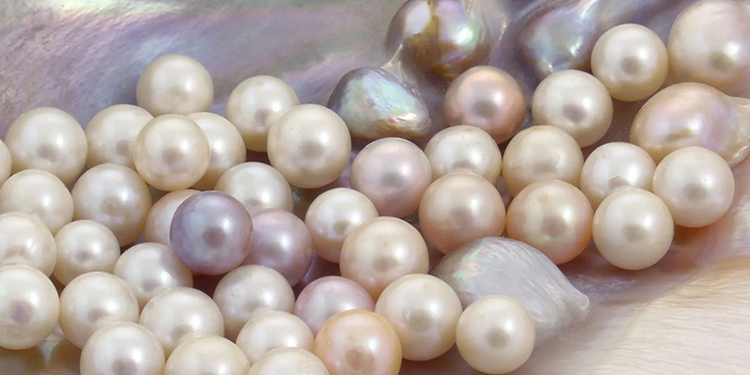
Pearls, cherished for their timeless beauty, come in various types: natural, cultured, and imitation.
Each category possesses distinct qualities that contribute to its allure.
Different Types of Pearls: Natural vs. Cultured vs. Imitation
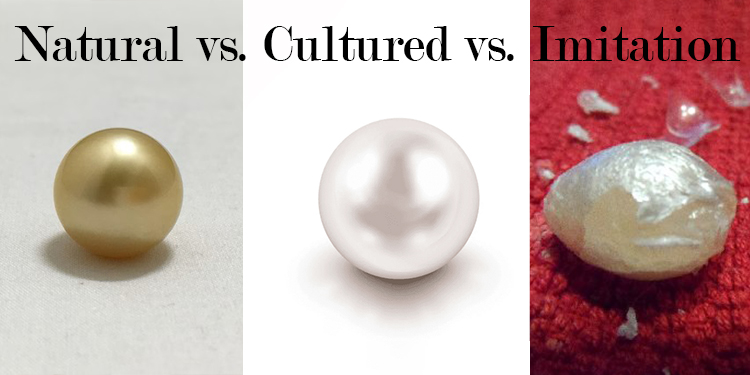
Pearls can be broadly classified into natural, cultured, and imitating.
Natural pearls form organically within oysters and mollusks, resulting from an accidental irritant.
Cultured pearls, conversely, are cultivated through a controlled process where a pearl nucleus is inserted into the mollusk to encourage pearl growth. Imitation pearls, often made from glass or plastic, mimic the appearance of genuine pearls but lack their intrinsic value.
Pearl Formation Process and Characteristics
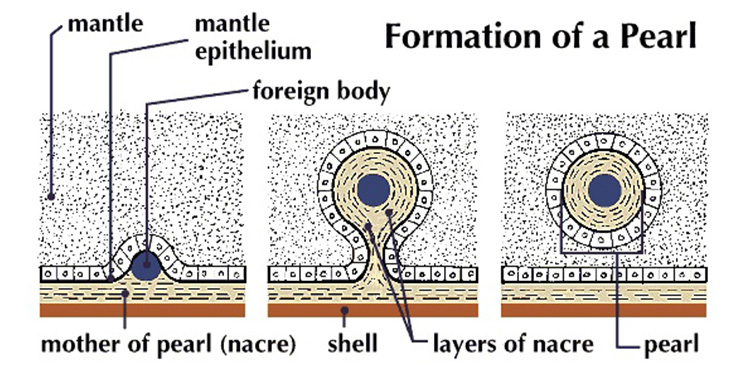
The enchanting luster of pearls stems from their unique formation.
When an irritant infiltrates the mollusk's soft tissue, it triggers the secretion of nacre, a lustrous substance composed of calcium carbonate.
Layer by layer, nacre coats the irritant, eventually creating a pearl.
The thickness and quality of the nacre contribute to the pearl's iridescence and durability.
Factors such as shape, size, color, and surface quality differentiate pearls.
Market Value and Significance of Genuine Pearls

Genuine pearls hold an esteemed place in the realm of luxury and adornment.
Their scarcity, natural origin, and intricate formation process contribute to their elevated market value.
Historically, various cultures have cherished Pearls, symbolizing purity, wisdom, and prosperity.
From elegant jewelry pieces to cultural artifacts, the enduring significance of genuine pearls endows them with a unique position in the world of precious gems.
The 'Tooth Test': What Is It?
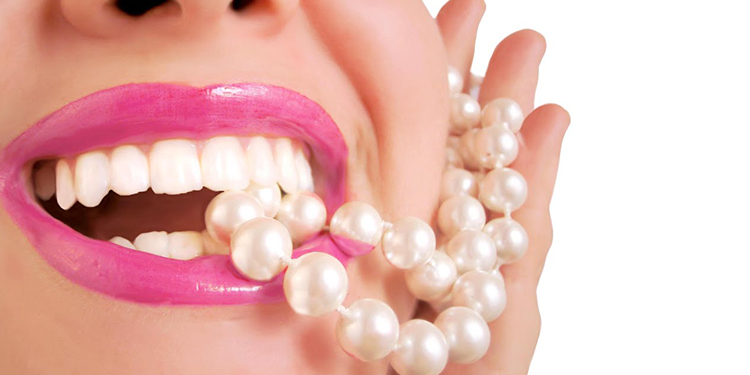
The 'Tooth Test' is a centuries-old method for authenticating pearls.
By rubbing a pearl against a tooth, experts gauge its texture.
Genuine pearls exhibit a slight, gritty sensation due to their crystalline structure, while imitations glide smoothly.
Its efficacy, though debated, offers a non-destructive approach to distinguishing real from faux pearls.
Origins and History of the 'Tooth Test'
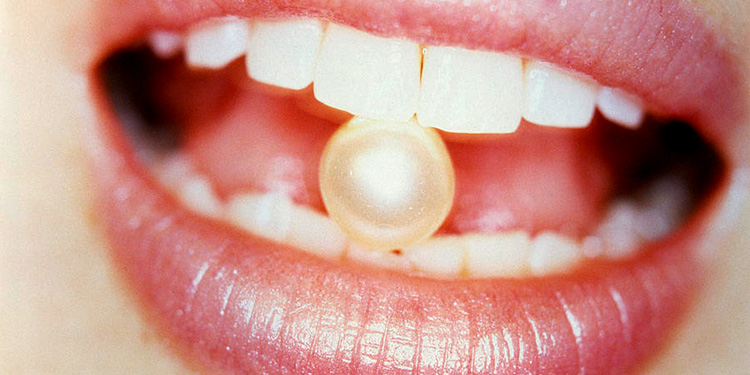
Dating back through centuries, the 'Tooth Test' has endured as a method for discerning the authenticity of pearls.
Originating in coastal communities, where pearls held profound cultural and economic significance, this test became an essential tool for traders and enthusiasts.
Explanation of the Test: How It's Performed
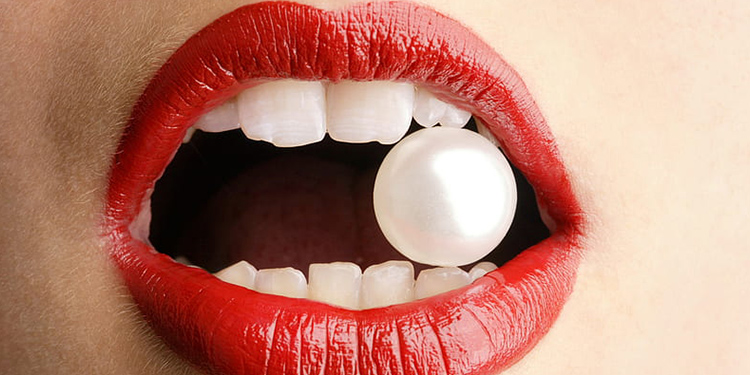
The 'Tooth Test' involves a tactile examination, leveraging the unique properties of genuine pearls.
When a pearl is lightly rubbed against the edge of a tooth, the surface texture is scrutinized.
Due to their crystalline structure, authentic pearls offer a slight, gritty resistance.
Conversely, imitation pearls, often fashioned from glass or plastic, glide smoothly, lacking the distinct friction of their genuine counterparts.
Claims and Expectations: What the Test Is Believed to Reveal
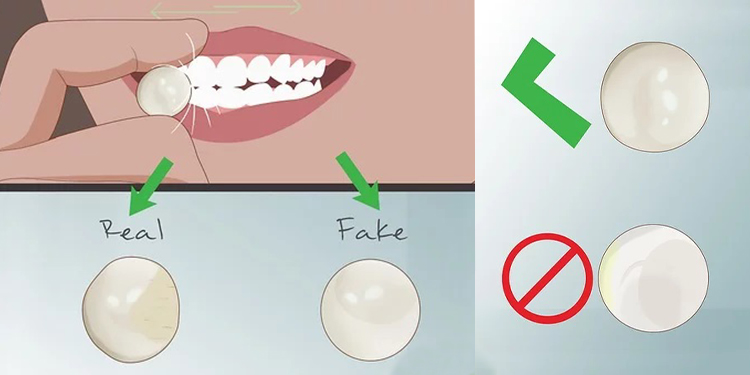
Proponents of the 'Tooth Test' assert its ability to unveil the authenticity of pearls based on subtle tactile feedback.
Advocates suggest that this method can distinguish between natural pearls and imitations, offering a straightforward, non-destructive means of assessment.
However, while widely circulated, the scientific validity of this test remains a topic of ongoing investigation and debate.
Scientific Basis of the Test
The scientific underpinning of the 'Tooth Test' lies in the intricate structural composition of pearls, perceptible through the lens of a microscope.
Genuine pearls, birthed within mollusks, reveal a distinctive arrangement of calcium carbonate crystals, reflecting light in a mesmerizing play of iridescence.
When subject to the 'Tooth Test,' a natural pearl's surface, composed of numerous concentric layers, exhibits a subtle yet perceptible roughness.
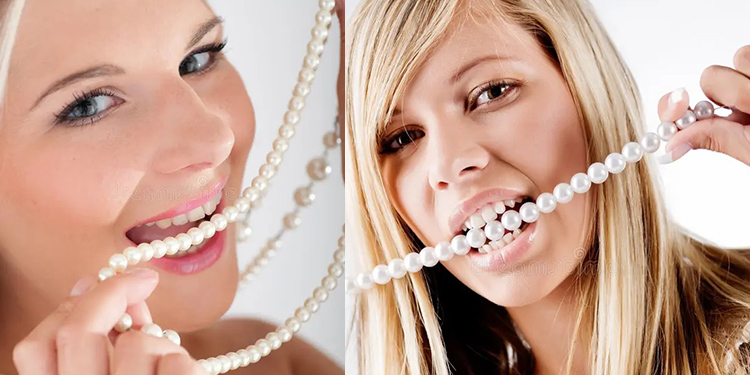
Upon closer inspection, the interaction between the tooth and the pearl's surface becomes pivotal.
Due to their delicate layers, authentic pearls transmit a faint grittiness upon gentle tooth contact.
This tactile feedback arises from the pearls' organic nature due to their formation process within mollusks.
In contrast, imitations, often crafted from glass or plastic, lack genuine pearls' nuanced texture and crystalline structure, yielding a discernibly smoother sensation against the tooth.
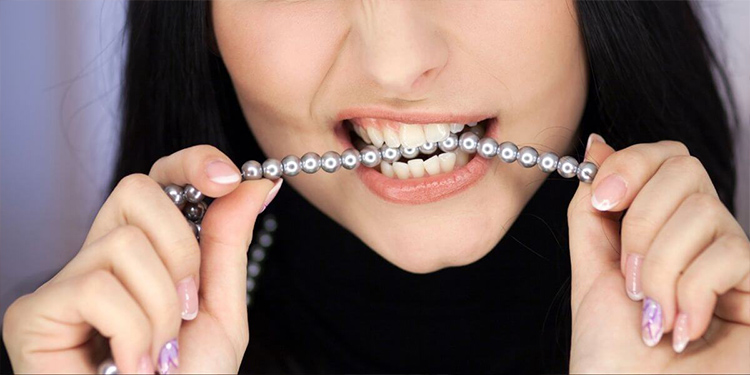
However, as with any method, the 'Tooth Test' bears critiques and limitations.
Relying solely on this test can lead to misjudgments, as variations in human perception and tactile sensitivity may influence outcomes.
Moreover, environmental factors, such as the pearl's surface treatment or the individual's oral health, can impede accurate results.
Therefore, while the 'Tooth Test' offers a valuable tool in the arsenal of pearl authentication, a comprehensive approach integrating various techniques remains imperative for robust and dependable identification.
Factors Influencing Results
Variability of Pearl Surfaces: Smooth vs. Textured
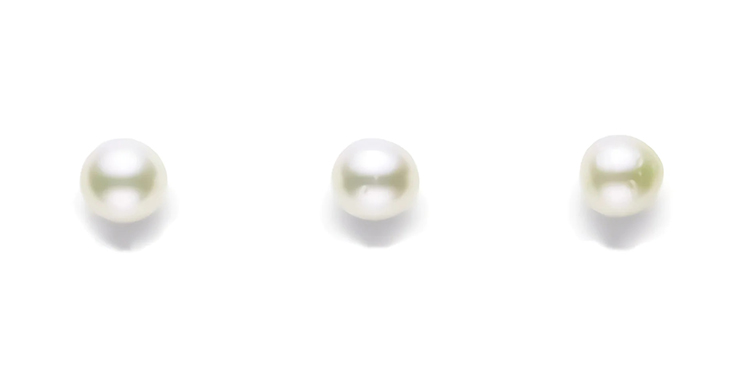
The surface of pearls varies widely, from velvety smooth to intricately textured.
This diversity can influence the 'Tooth Test' outcome, as the tactile sensation might differ based on surface characteristics.
A smoother pearl could provide a more subdued response than a textured one, potentially affecting the test's accuracy.
Impact of Pearl Luster and Orient on the Test
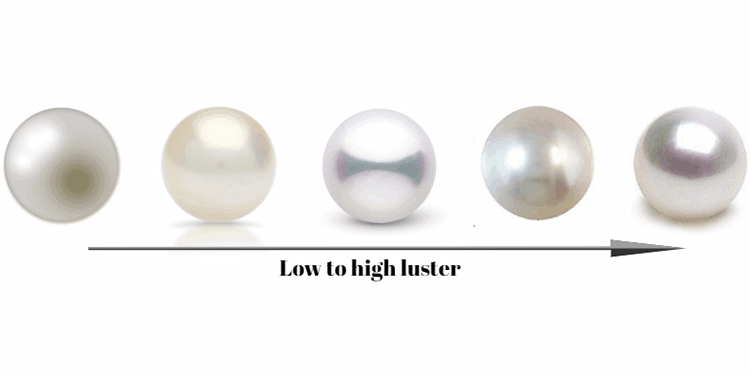
Pearl luster, the radiant quality that emanates from within, and orients the play of iridescent colors, contribute to a pearl's unique appeal.
These attributes could affect the perception of authenticity during the 'Tooth Test.' Luster might influence how light interacts with the tooth's surface, leading to varied interpretations.
Understanding False Negatives and False Positives
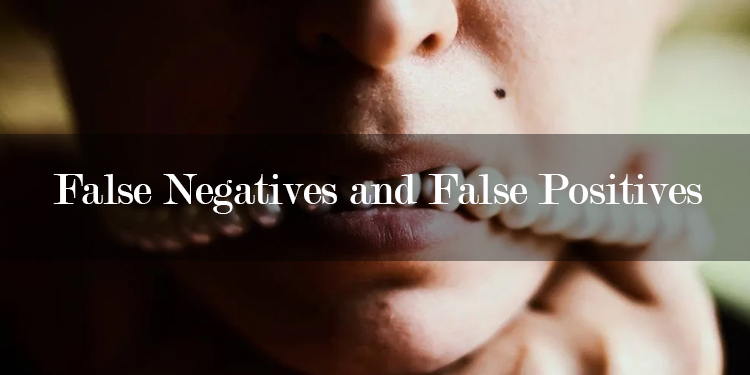
False negatives (authentic pearls deemed fake) and false positives (fake pearls deemed authentic) can arise due to the inherent complexity of the 'Tooth Test.' Individual sensitivity, pressure applied, and even subjective interpretation can contribute to these discrepancies.
Recognizing and addressing these possibilities is essential to harnessing the test's reliability.
Real vs. Fake: Visual Analysis
Visual cues play a pivotal role in unraveling the authenticity of pearls, offering a discerning eye insight into their genuine nature.
Genuine pearls boast a distinct luster, with a subtle radiance reflecting light uniquely and mesmerisingly.
This visual allure is accompanied by a surface exhibiting minute imperfections, a hallmark of their natural formation.
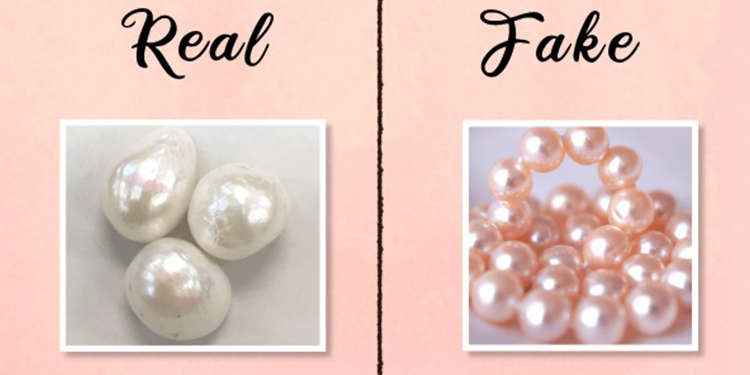
In stark contrast, imitation pearls lack the genuine luster of their authentic counterparts.
Their surface often appears too uniform and flawless, hinting at their manufactured origin.
Moreover, upon closer inspection, imitation pearls may reveal subtle seams or a plastic-like sheen, betraying their artificial composition.
Venturing beyond visual analysis, the 'Tooth Test' brings a tactile dimension to the authenticity assessment.
While visual cues offer initial insights, this test involves gentle friction between the pearl and tooth, revealing the subtle texture characteristic of genuine pearls.
By comparing the results of both visual analysis and the 'Tooth Test,' a comprehensive and reliable method emerges, empowering enthusiasts and experts alike to confidently decipher the true nature of pearls, distinguishing the authentic from the imitation with precision.
Expert Opinions
Insights from Gemologists and Pearl Experts
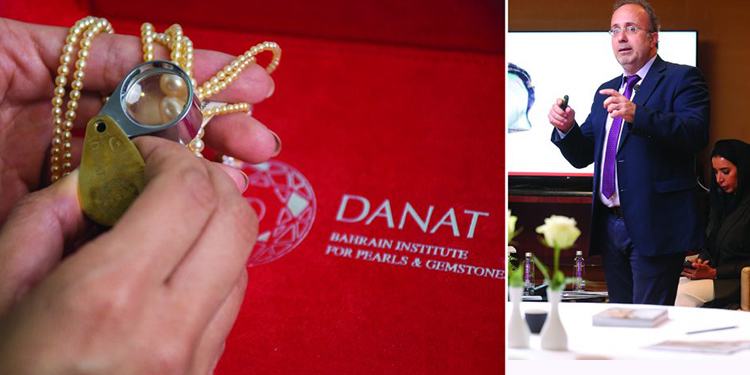
Gemologists and seasoned pearl experts lend their voices to the discourse, acknowledging the 'Tooth Test' as a traditional technique deeply rooted in history.
They underscore its role in gauging subtle textural variations unique to genuine pearls, acquired through years of experience and tactile sensitivity.
Controversies Surrounding the Reliability of the 'Tooth Test'
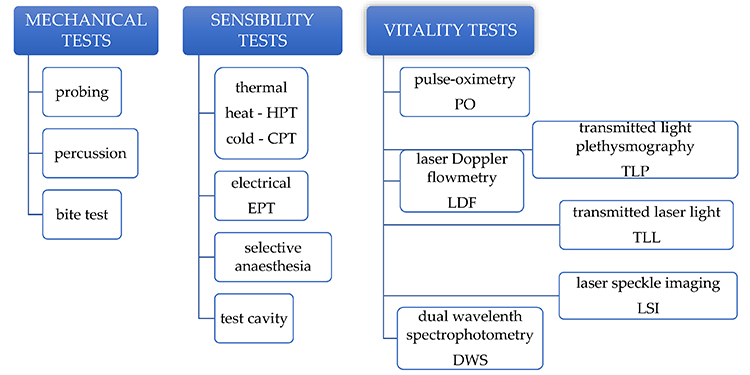
The 'Tooth Test' has not escaped scepticism. Critics argue that its subjectivity and potential damage to pearls raise concerns.
While proponents highlight its cultural heritage and the intuition it fosters, debates continue regarding its scientific validity in a modern context.
Other Methods Recommended by Professionals
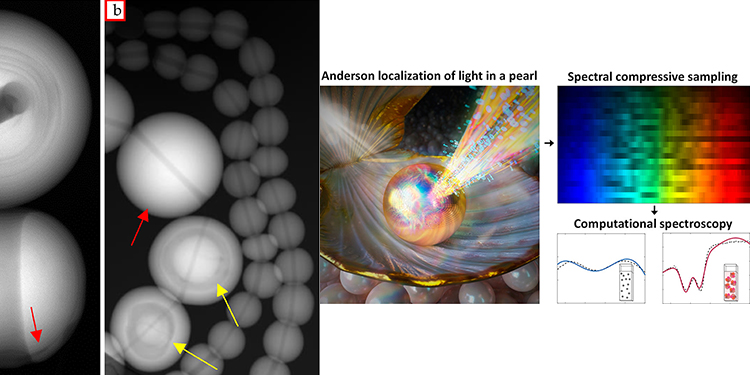
Amidst debates, experts advocate for a holistic approach.
They propose a fusion of traditional tactile assessments, like the 'Tooth Test,' with modern techniques such as X-ray imaging, spectroscopy, and refractometry.
Such integration seeks to balance heritage and innovation in pursuing accurate pearl authentication.
DIY Tests: Pros and Cons
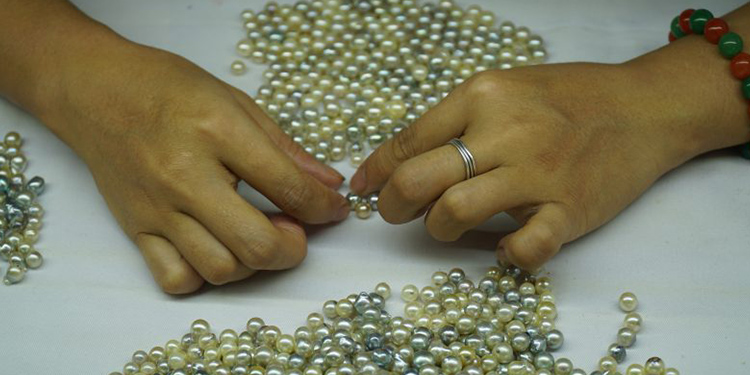
The popularity of At-Home Pearl Authenticity Tests
As the allure of pearls continues to captivate jewellery enthusiasts, the popularity of at-home pearl authenticity tests has surged.
These DIY methods offer a convenient and cost-effective means for individuals to assess the genuineness of their cherished pearls.

Pros: Convenience, Cost-Effectiveness, and Simplicity
One notable advantage of DIY tests is their unmatched convenience.
Enthusiasts can conduct these tests in the comfort of their homes, eliminating the need for professional intervention.

Moreover, these methods often require minimal expenditure, making them affordable for those seeking quick answers about their pearls.
The simplicity of these tests also allows even novices to engage in pearl authenticity assessment without extensive expertise.
Cons: Risk of Damaging Pearls, Inaccurate Results, and Lack of Expertise
However, the allure of DIY tests is accompanied by certain drawbacks.
The risk of inadvertently damaging pearls during testing looms large, particularly for those lacking experience.
Additionally, the reliance on at-home methods can yield inaccurate results, potentially misidentifying genuine pearls as imitations or vice versa.
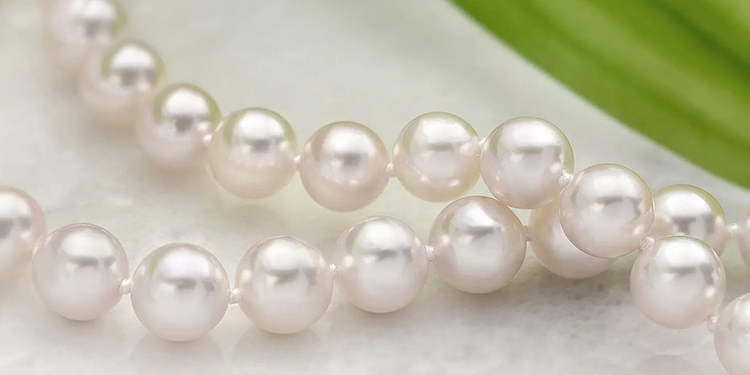
Furthermore, the absence of professional expertise increases the likelihood of misinterpretation and hinders the comprehensive understanding of pearl authenticity nuances.
Summing Up The Evidence
We consolidate a comprehensive panorama of evidence by synthesizing various sources, including scientific studies, historical records, and personal anecdotes.
Our reasonable evaluation of the 'Tooth Test' reveals it as a promising gauge of pearl authenticity.
However, a prudent perspective underscores the necessity of a multifaceted authentication methodology, wherein this age-old technique collaborates harmoniously with modern analytical methods.
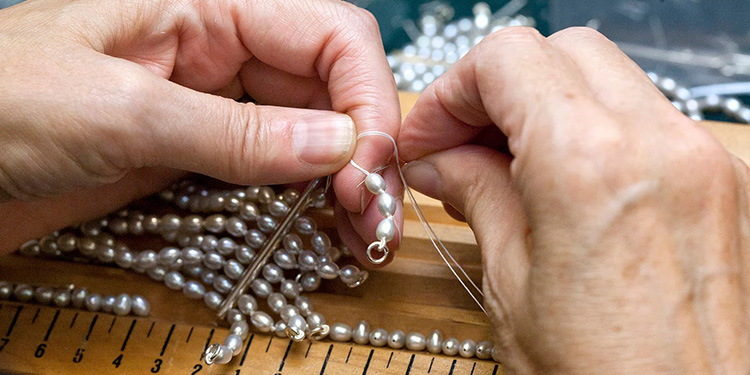
This summation underscores the journey towards a holistic approach to discerning genuine pearls, enhancing our understanding and appreciation of these luminous treasures.
Conclusion
In the intricate world of pearls, the 'Tooth Test' emerges as a bridge between tradition and innovation, offering a tactile glimpse into authenticity.
While debates persist, its legacy and potential cannot be dismissed.
As we traverse history and science, a harmonious fusion of methods paves the way for a more enlightened realm of pearl authentication.


Leave a Comment